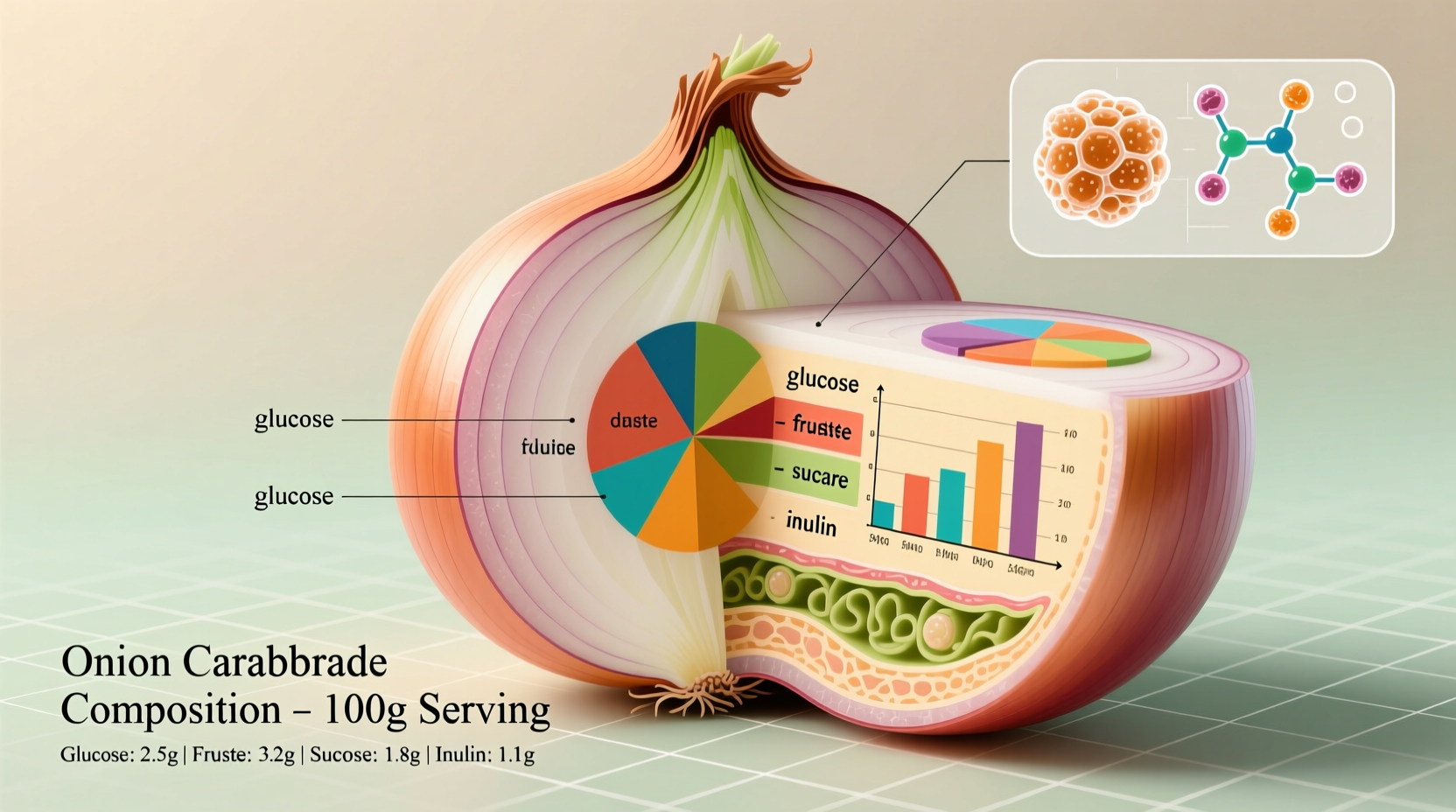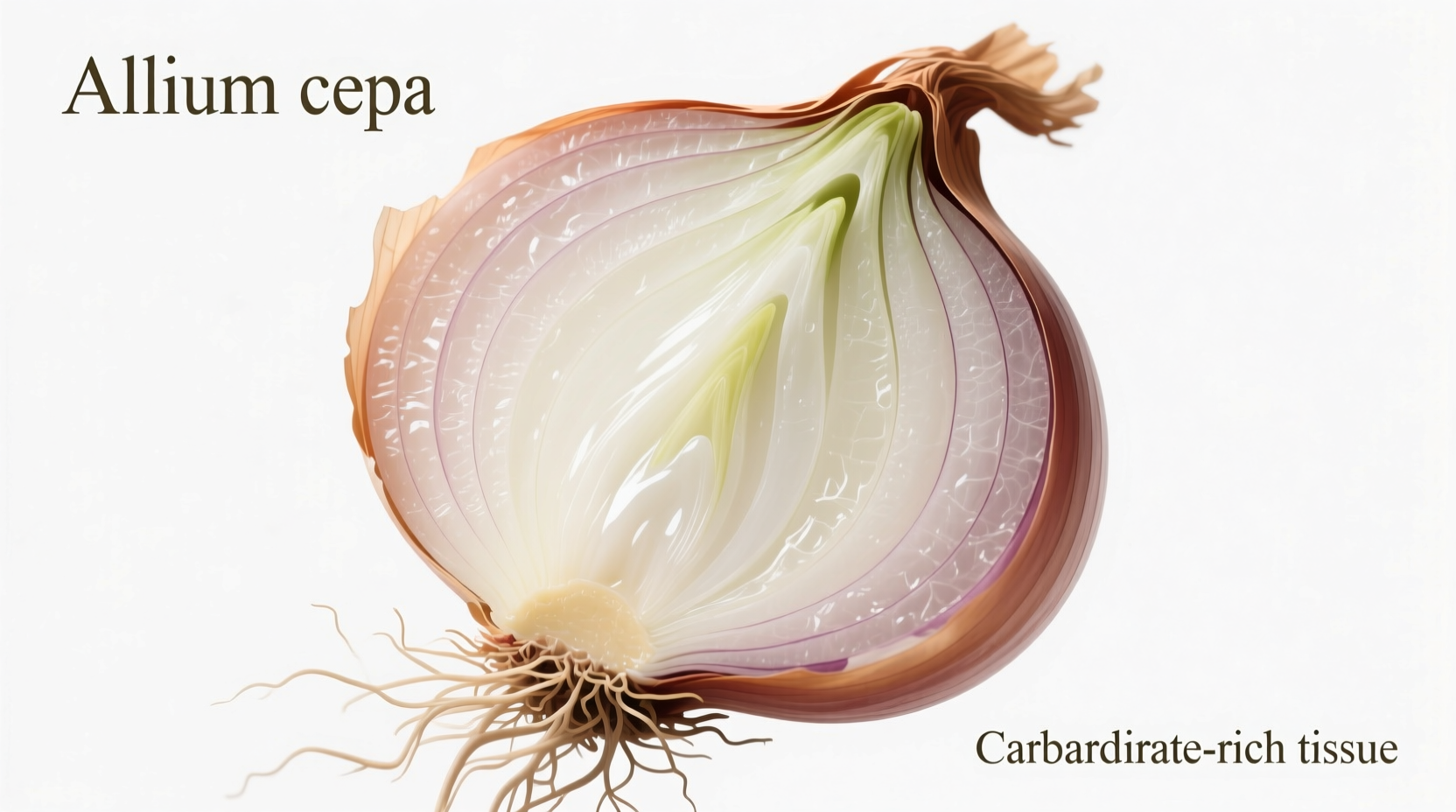Understanding onion carbohydrate content is essential for anyone managing dietary needs, from keto dieters to people with diabetes. This guide delivers precise nutritional data you can trust, backed by scientific analysis and practical kitchen insights.
Carbohydrate Composition Across Onion Varieties
Not all onions are created equal when it comes to carbohydrate content. The USDA FoodData Central database provides definitive measurements that reveal important differences between common varieties. These variations significantly impact how onions fit into specific dietary plans.
| Onion Type | Total Carbs (per 100g) | Dietary Fiber | Net Carbs | Natural Sugars |
|---|---|---|---|---|
| Yellow Onion (raw) | 9.3g | 1.7g | 7.6g | 4.2g |
| Red Onion (raw) | 9.5g | 2.0g | 7.5g | 4.0g |
| White Onion (raw) | 9.6g | 1.8g | 7.8g | 4.3g |
| Green Onions (raw) | 7.3g | 2.6g | 4.7g | 2.7g |
| Scallions (raw) | 7.0g | 2.6g | 4.4g | 2.5g |
Data source: USDA FoodData Central, Release 1.0 (2023)
How Cooking Transforms Onion Carbohydrates
When you cook onions, their carbohydrate profile changes in ways that matter for dietary planning. The common misconception that cooking increases carb content needs clarification with scientific facts.
As onions cook, water content evaporates (raw onions are 89% water), concentrating carbohydrates by volume but not by weight. A cup of raw chopped yellow onion (160g) contains about 15g total carbs, while the same volume of caramelized onions (reduced to 60g) contains approximately 5.6g total carbs. The key insight: cooking doesn't add carbs—it changes density.
The caramelization process breaks down complex sugars into simpler forms, making them more readily available but not increasing total carbohydrate content. This explains why cooked onions taste sweeter despite having the same overall carb count per gram.

Onions in Specialized Dietary Patterns
Understanding how onions fit into different eating approaches requires examining both quantity and context. These practical guidelines help you make informed decisions based on your specific dietary needs.
Keto and Low-Carb Diets
For strict keto diets (under 20g net carbs daily), a quarter cup of raw chopped onion (about 40g) contributes approximately 3g net carbs. Red onions provide the lowest net carb option at 7.5g per 100g. Many keto practitioners limit onion use to flavoring rather than as a primary ingredient.
Diabetes Management
With a glycemic index of 10, onions have minimal impact on blood sugar. The American Diabetes Association confirms that onions can be freely included in diabetes meal plans due to their low carbohydrate density and high fiber content. The chromium in onions may actually improve insulin sensitivity according to research published in the Journal of Nutrition and Metabolism.
Low-FODMAP Considerations
For those following the low-FODMAP diet for IBS management, onions present a challenge. They contain fructans that trigger symptoms in sensitive individuals. The Monash University Low-FODMAP guidelines indicate that green onions (scallions) are acceptable in the green parts only (5g serving), while regular onions should be avoided during elimination phases.
Practical Kitchen Strategies for Carb-Conscious Cooking
Professional chefs use specific techniques to maximize onion flavor while minimizing carbohydrate impact. These evidence-based approaches deliver maximum flavor with controlled carb intake.
- Use the 10% rule: For most dishes, onions comprising no more than 10% of total ingredients keeps carb impact minimal while providing flavor foundation
- Substitute wisely: For ultra-low-carb needs, replace half the onion with chopped celery or fennel (both under 3g net carbs per 100g)
- Extract flavor without bulk: Simmer whole onions in stocks or sauces, then remove before serving to gain flavor without consuming the carbs
- Choose green onions strategically: The white bulb contains most carbs—use primarily the green tops for garnish (75% lower carbs)
Common Misconceptions About Onion Carbohydrates
Several persistent myths about onion carbs create unnecessary dietary restrictions. Let's examine these with scientific evidence.
Myth: "Cooked onions have more carbs than raw onions."
Reality: Cooking concentrates flavor but doesn't increase total carbohydrate content per gram. The perceived sweetness comes from sugar concentration as water evaporates, not additional carbs.
Myth: "All onions have the same carb content."
Reality: As shown in our comparative table, red onions have slightly lower net carbs than yellow varieties, while green onions contain nearly 40% fewer net carbs.
Myth: "Onions will kick you out of ketosis."
Reality: A standard 1/4 cup serving of onions (about 40g) contains only 3g net carbs—well within most keto dieters' daily allowances when accounted for properly.
When Onion Carbohydrates Matter Most
Understanding context is crucial for determining when onion carbs require careful tracking. These scenarios represent situations where precise carb counting becomes essential:
- Therapeutic ketogenic diets (for epilepsy management) requiring under 10g net carbs daily
- Type 1 diabetes meal planning with precise carb counting for insulin dosing
- Post-bariatric surgery nutrition with severely restricted carbohydrate tolerance
- Competitive bodybuilding during strict pre-competition dieting phases
For general health and most dietary patterns, onions provide valuable nutrients with minimal carb impact. Their prebiotic fiber actually supports gut health, making them a net positive for most people's diets.











 浙公网安备
33010002000092号
浙公网安备
33010002000092号 浙B2-20120091-4
浙B2-20120091-4